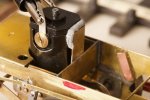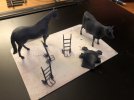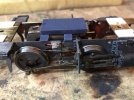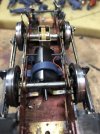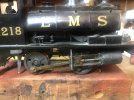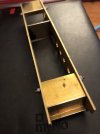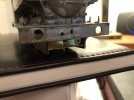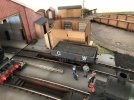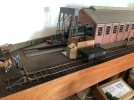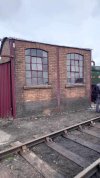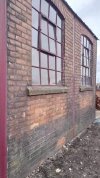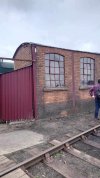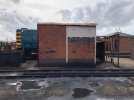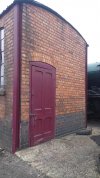Pencarrow
Western Thunderer
Well, I've done no actual modelling today. But lots of digital modelling, which has raised a few issues, I think 1366 panniers are supposed to be challenging.
View attachment 200224
we have an assembly of frames, wheels, cylinders, motor and footplate.
View attachment 200225
the main issues are to do with stuff being in the way of the CSB.
Frame spacers - assuming I use the Premier frames that Chris purchased, I either make some new spacers, or get Billy to do so (he's going to offer wider spacers - 25.6mm , at some point). Chances are I will need to make them because the body fixing holes do not align with the chassis. In any case, they will need to accept the CSB wires both front and rear.
Frames. Surprisingly the Premier frames are shorter than they should be, by several mm. Not an issue. I can make a new rear frame spacer to pick up the body mounting screw, but of course, it'll be in the way of the rear coupling spring, because the screw goes into a captive nut in the bunker.
The motion bracket is nothing at all like the drawings of the loco that Chris gave me. I have redesiged it and will make a new one. Probably a fretsaw job. This will provide a fulcrum point between the leading and driving axles. Similarly there will need to be a visual frame spacer between the cylinders, that's an easy win.
Pick-ups. I have put in my own design. The leading and driving axles are fine. The rear axle pickups interfere with the CSB. There is nowhere else to put the pickups if they are an across-the-frames design as the gearbox is in the way. Small wheels... Might need to put back-scratchers on the rear axle
Weight - it's heavy, but the distribution is not ideal. Accordingly I have a 136g bag of lead shot which pretty much fills the bunker. That gets the all up weight to around 850g, and the CoG back to somewhere in the middle. That, in turn, allows the weight distribution on the axles to be about 35% on the front and rear, and 30% on the middle, which will hopefully avoid the thing porpoising.
At this point, I am wondering if it might be worthwhile programming the big mill at work and simply making new frames, but the jury's out on that at the moment. I have a CRT/POWsides 1361 saddle tank to build for myself, and some 1.2mm engraving brass, so maybe two birds with one stone... (or three, if I decide to upgrade my own 1366!)
View attachment 200226
Can't think of a better way to spend a wet Saturday, but I'd have liked to have solved more problems than I've found!
Great to see it in 3d CAD! Interesting that the blessed beastie is causing you to scratch you head a little bit too, makes me feel marginally better that I waved the white flag.
Yes I noticed that the frames were short. I did look into this a while back and wondered if the were packing pieces at the rear behind the buffer beam. Very difficult to find clear photos of the rear of these locos - the few of the rear and those that there are often have the rear underneath in shadow.
Regarding the weight... I did intend to add more in the rear bunker but as you have found... I didn't get that far. The idea was to sort the chassis first and I wasn't sure if I was going to need to move the rear fixing points. That's my excuse anyway.


 )
)